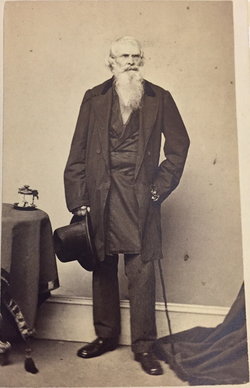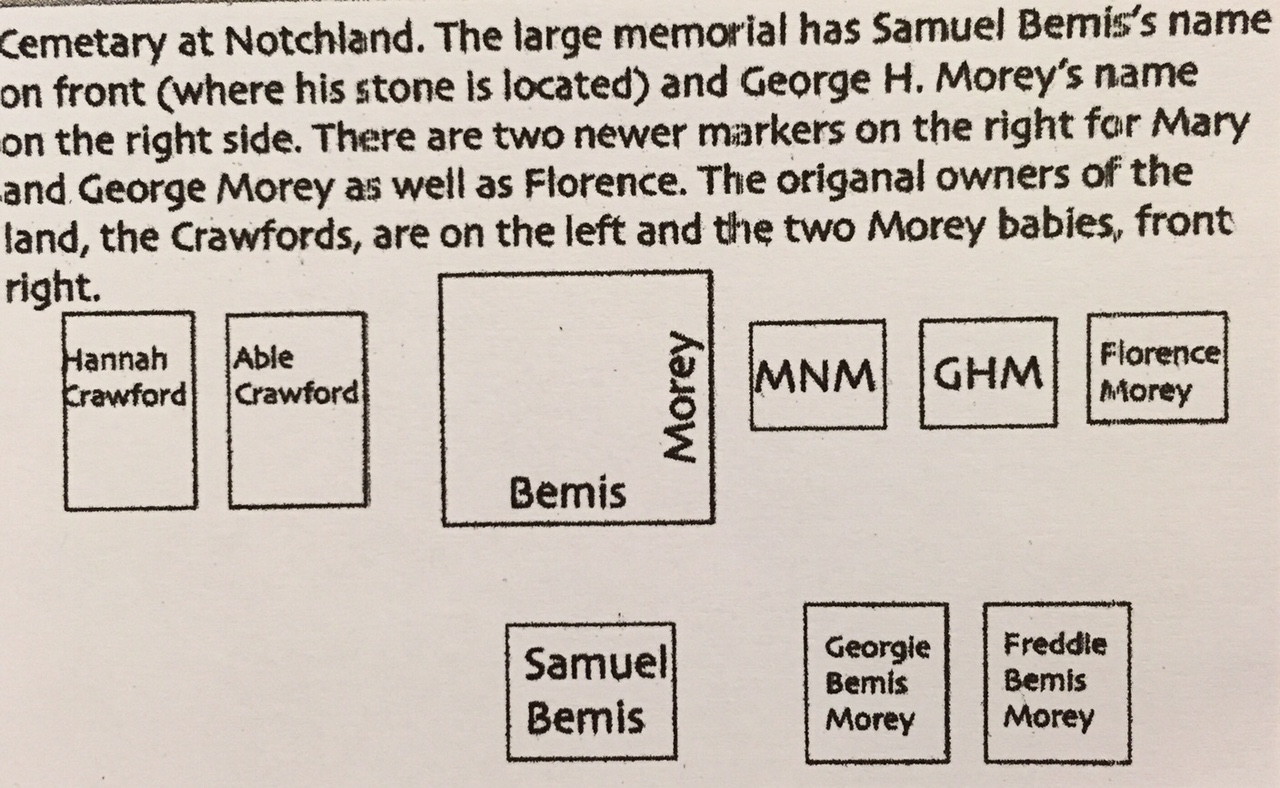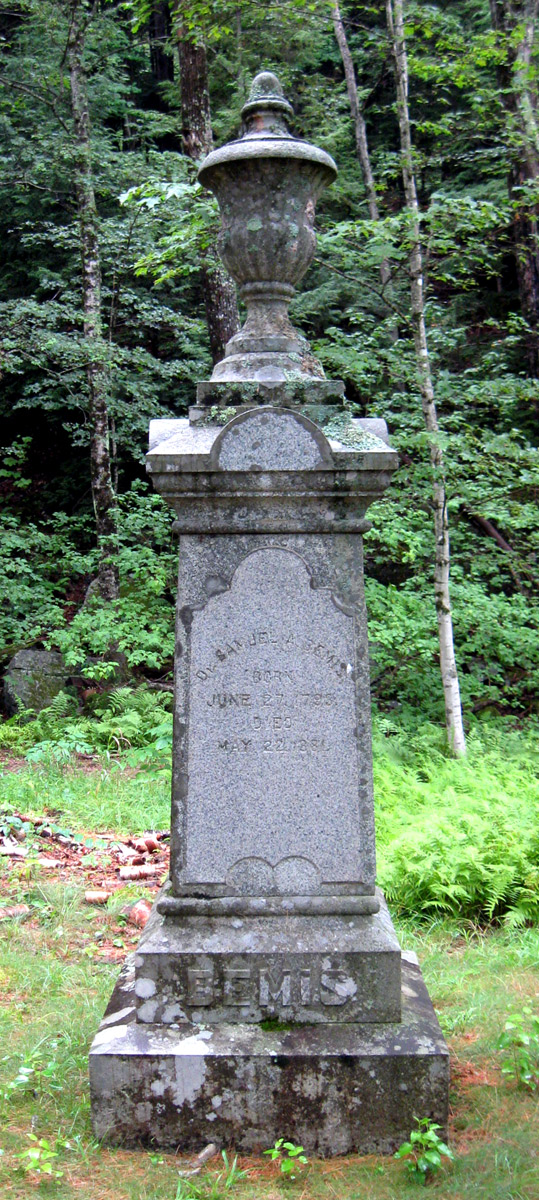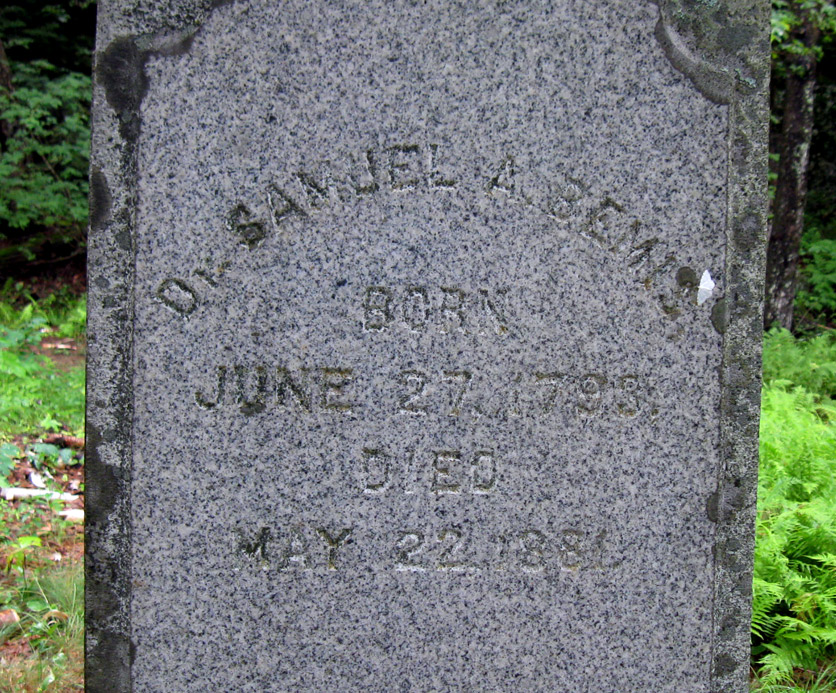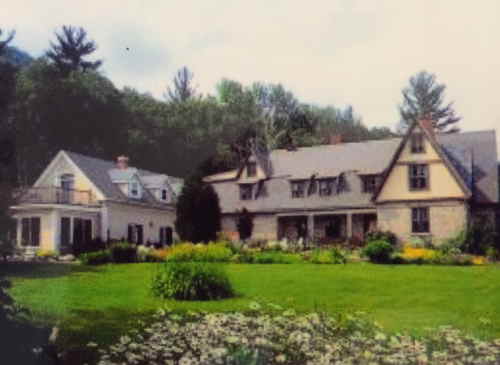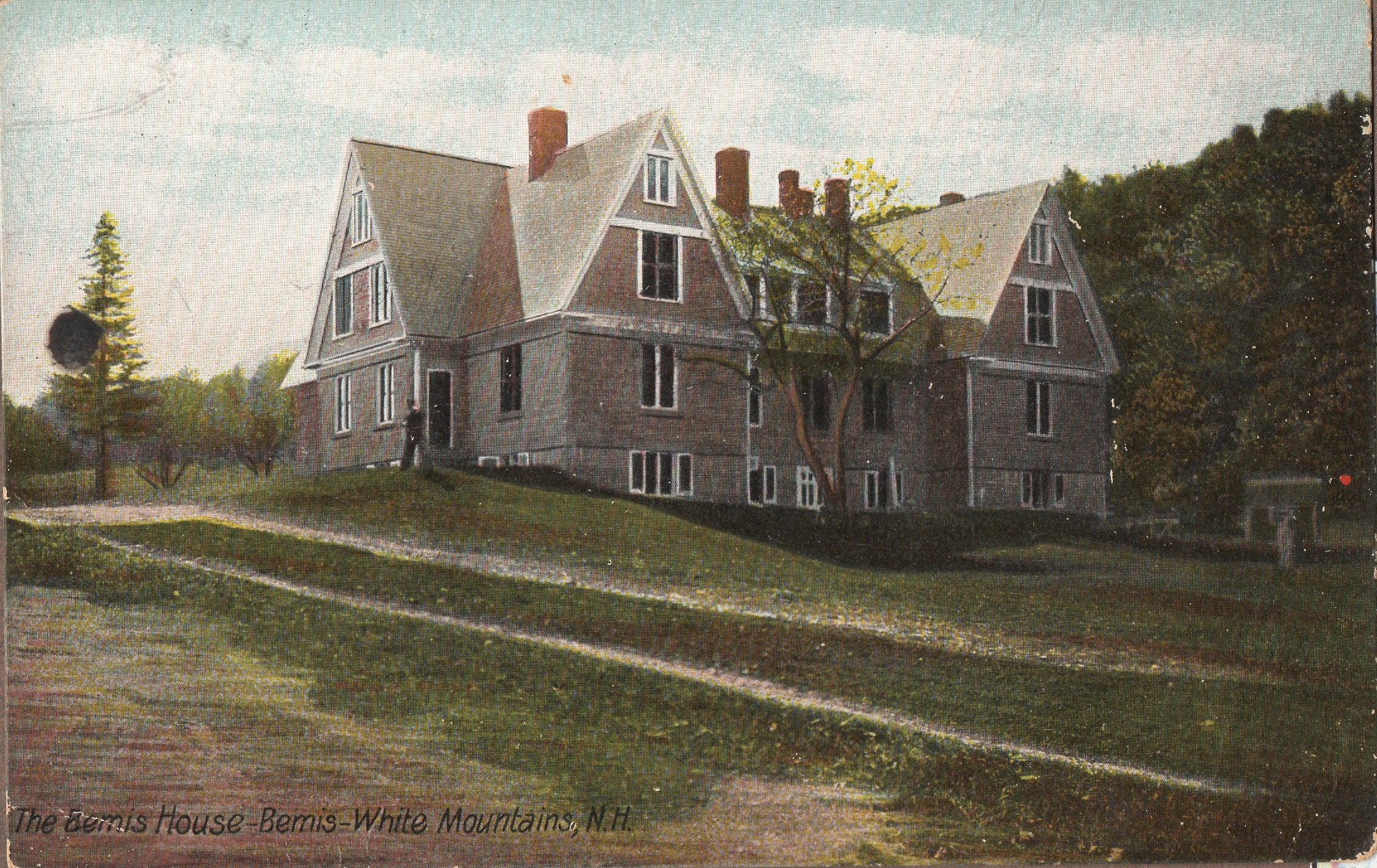In 1821 Bemis decided his future lay in civil engineering or surveying. His physician and friend, Dr. Zabdiel Adams (1793-1855), insisted his mechanically-inclined friend would make a superior dentist. Bemis had experience with the tools of dentistry as he had repaired a tooth extractor in VT in 1810 and had redesigned Dr. Adams' tooth extractor with success, designing a "painless" tooth extraction tool. He substantially improved upon the false teeth of the day and also made a surveying instrument.
Samuel started in the Dental practice in early 1822. He became a well respected dentist, receiving requests from New York City and Philadelphia to open a practice there - if only for a few weeks each year. He amassed enough money in his practice to purchase an undeveloped city block in Baltimore, Maryland, and to hold several mortgages in the Boston area.
When François Gouraud came to Boston in the spring of 1840, Bemis probably attended one of the first lectures. On April 15, 1840, he dove in head-first and purchased a complete Giroux-built daguerreotype outfit and twelve whole-plates from Gouraud for $76, a considerable sum. (This is believed to be the first camera sold commercially in the United States.) His first recorded image (April 19, 1840) is of the King's Chapel and its Burying Ground from his office building on School Street. The bulk of the extant images were taken in the White Mountains of New Hampshire, the location of Bemis's vacations starting in 1833, and his retirement home after 1861. He is known as the first American landscape photographer.
Of his forty-one extant "plates", 19 were purchased by Eastman Kodak Company's Eastman Historical Photographic Collection (EHPC) in 1937, 22 were sold at the Florence Morey estate auction in 1980. (Florence Morey was a second generation legatee of Dr. Samuel A. Bemis.) Of these 22 images, 9 are known to be in institutional collections. The remaining 13 are in private or unknown collections. Bemis actively daguerreotyped until October, 1843, and then took up other hobbies. However, his camera apparatus may still be seen in the George Eastman House in NY along with the original bill of sale and a number of his images.
Bemis took up horticulture in NH as early as 1853. His grafting experiments paid dividends as he was awarded a silver medal in 1860 from the Massachusetts Horticultural Society for his "Collection of Apples."
Bemis owned land in Hart's Location, NH in early 1855 having taken ownership of the Mount Crawford House from the previous owner, Nathaniel T.P. Davis, son-in-law of Abel Crawford who had pioneered tourism in the White Mountains. This property included most of today's Crawford Notch. At one point he owned about 6000 acres. Dr Bemis had previously stayed at the Crawford House and when Abel was seriously ill he brought a Dr Rogers to tend him, performing an operation which saved his life. Abel was forever indebted to these two men for saving his life.
Spurned in romance shortly after his move, Bemis built a granite mansion and became an eccentric recluse. Building began about 1862 and he and his staff moved into the house on Christmas Eve 1870. (This mansion is currently the Notchland Inn, a B&B). It is entirely of stone. Even the posts in the basement are cut granite and the fireplace is supported on granite lintels supported by granite posts. The sills are granite. Bemis quarried the granite on his own land, from a quarry along the Sawyer River.
At one time called "the Lord of the Valley," Bemis named a lake, mountain, brook, ridge, and other spots in the White Mountains for himself. He named Frankenstein Cliff for a prominent painter who did his portrait, Godfrey Frankenstein, along with the famous Frankenstein Trestle on the railroad there. In his obituary, he was described as "not as odd as might be expected, yet sufficiently so to distinguish him from the ordinary run of men."
Dr Bemis died a very wealthy man at the mansion in Hart's Location and is buried in this small cemetery on the property beside Abel Crawford and his wife Hannah. Having never married, he left all his property to George Morey, his long-time friend, caretaker, and manager of his farm.
NOTE:
Samuel and Henry Bemis were born to Samuel Bemis and Hezadiah (or sometimes spelled Hassada). It is uncertain as to their marital status. In 1824 when she married William Winn, she was listed as Hezadiah Bemis.
Contributor: KimberlyAndersonBloodgood (48865337)
In 1821 Bemis decided his future lay in civil engineering or surveying. His physician and friend, Dr. Zabdiel Adams (1793-1855), insisted his mechanically-inclined friend would make a superior dentist. Bemis had experience with the tools of dentistry as he had repaired a tooth extractor in VT in 1810 and had redesigned Dr. Adams' tooth extractor with success, designing a "painless" tooth extraction tool. He substantially improved upon the false teeth of the day and also made a surveying instrument.
Samuel started in the Dental practice in early 1822. He became a well respected dentist, receiving requests from New York City and Philadelphia to open a practice there - if only for a few weeks each year. He amassed enough money in his practice to purchase an undeveloped city block in Baltimore, Maryland, and to hold several mortgages in the Boston area.
When François Gouraud came to Boston in the spring of 1840, Bemis probably attended one of the first lectures. On April 15, 1840, he dove in head-first and purchased a complete Giroux-built daguerreotype outfit and twelve whole-plates from Gouraud for $76, a considerable sum. (This is believed to be the first camera sold commercially in the United States.) His first recorded image (April 19, 1840) is of the King's Chapel and its Burying Ground from his office building on School Street. The bulk of the extant images were taken in the White Mountains of New Hampshire, the location of Bemis's vacations starting in 1833, and his retirement home after 1861. He is known as the first American landscape photographer.
Of his forty-one extant "plates", 19 were purchased by Eastman Kodak Company's Eastman Historical Photographic Collection (EHPC) in 1937, 22 were sold at the Florence Morey estate auction in 1980. (Florence Morey was a second generation legatee of Dr. Samuel A. Bemis.) Of these 22 images, 9 are known to be in institutional collections. The remaining 13 are in private or unknown collections. Bemis actively daguerreotyped until October, 1843, and then took up other hobbies. However, his camera apparatus may still be seen in the George Eastman House in NY along with the original bill of sale and a number of his images.
Bemis took up horticulture in NH as early as 1853. His grafting experiments paid dividends as he was awarded a silver medal in 1860 from the Massachusetts Horticultural Society for his "Collection of Apples."
Bemis owned land in Hart's Location, NH in early 1855 having taken ownership of the Mount Crawford House from the previous owner, Nathaniel T.P. Davis, son-in-law of Abel Crawford who had pioneered tourism in the White Mountains. This property included most of today's Crawford Notch. At one point he owned about 6000 acres. Dr Bemis had previously stayed at the Crawford House and when Abel was seriously ill he brought a Dr Rogers to tend him, performing an operation which saved his life. Abel was forever indebted to these two men for saving his life.
Spurned in romance shortly after his move, Bemis built a granite mansion and became an eccentric recluse. Building began about 1862 and he and his staff moved into the house on Christmas Eve 1870. (This mansion is currently the Notchland Inn, a B&B). It is entirely of stone. Even the posts in the basement are cut granite and the fireplace is supported on granite lintels supported by granite posts. The sills are granite. Bemis quarried the granite on his own land, from a quarry along the Sawyer River.
At one time called "the Lord of the Valley," Bemis named a lake, mountain, brook, ridge, and other spots in the White Mountains for himself. He named Frankenstein Cliff for a prominent painter who did his portrait, Godfrey Frankenstein, along with the famous Frankenstein Trestle on the railroad there. In his obituary, he was described as "not as odd as might be expected, yet sufficiently so to distinguish him from the ordinary run of men."
Dr Bemis died a very wealthy man at the mansion in Hart's Location and is buried in this small cemetery on the property beside Abel Crawford and his wife Hannah. Having never married, he left all his property to George Morey, his long-time friend, caretaker, and manager of his farm.
NOTE:
Samuel and Henry Bemis were born to Samuel Bemis and Hezadiah (or sometimes spelled Hassada). It is uncertain as to their marital status. In 1824 when she married William Winn, she was listed as Hezadiah Bemis.
Contributor: KimberlyAndersonBloodgood (48865337)
